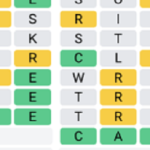
Hungry Lamu 2
Advertisement
Hungry Lamu 2 continues the eerie journey of a once-innocent character trapped between delusion and reality. This sequel abandons the lighthearted deception of the first game and instead drops players straight into a world where something has clearly gone wrong. Set in a distorted forest that feels both familiar and hostile, the game invites the player to piece together fragmented memories and uncover the truth behind Lamu’s hunger. There are no instructions, no dialogue, and no direct explanations—only visual storytelling, environmental puzzles, and an oppressive atmosphere that grows darker with every step forward.
Advertisement
Similiar games
Hungry Lamu 2 continues the eerie journey of a once-innocent character trapped between delusion and reality. This sequel abandons the lighthearted deception of the first game and instead drops players straight into a world where something has clearly gone wrong. Set in a distorted forest that feels both familiar and hostile, the game invites the player to piece together fragmented memories and uncover the truth behind Lamu’s hunger. There are no instructions, no dialogue, and no direct explanations—only visual storytelling, environmental puzzles, and an oppressive atmosphere that grows darker with every step forward.
Exploration, Perspective Shifts, and Design
The gameplay in Hungry Lamu 2 is built around two contrasting perspectives. During daytime sequences, players explore the world from a top-down 2D view, interacting with objects, gathering supplies, and unlocking new areas. But at key moments, often triggered by strange sounds or visual changes, the game shifts to a first-person 3D mode. These sequences are disorienting and tense, throwing the player into narrow, dark paths where Lamu’s past—or possibly his hallucinations—come to life. The seamless transition between styles reinforces the theme of a fractured mind, where the boundary between innocence and horror is constantly breaking.
Gameplay Features and Objectives
Although simple on the surface, the gameplay offers surprising complexity. There are no combat mechanics, but survival depends on awareness, timing, and logic. The game uses small clues scattered across the environment to guide progress, rewarding players who observe rather than rush.
Key gameplay elements include:
· Switching between 2D and 3D gameplay depending on time or story events
· Collecting tools and items to solve environmental puzzles
· Navigating through maze-like paths during first-person sequences
· Using clues from the environment to uncover hidden passages
· Unlocking multiple endings depending on which events the player triggers
These features build tension slowly and create a sense of unease that grows stronger as the game progresses.
Emotional Depth and Symbolism
More than just a horror experience, Hungry Lamu 2 explores themes of trauma, guilt, and transformation. Lamu is no longer portrayed as just a quirky character—he’s a being shaped by something he cannot control. The forest acts as a metaphor for memory, with every broken path and corrupted object reflecting pieces of a forgotten or suppressed past. As players dig deeper into the story, they begin to question whether Lamu is still himself or something entirely different. The game refuses to offer easy answers, leaving players to draw their own conclusions about what happened and who is truly responsible.
Discuss Hungry Lamu 2
























